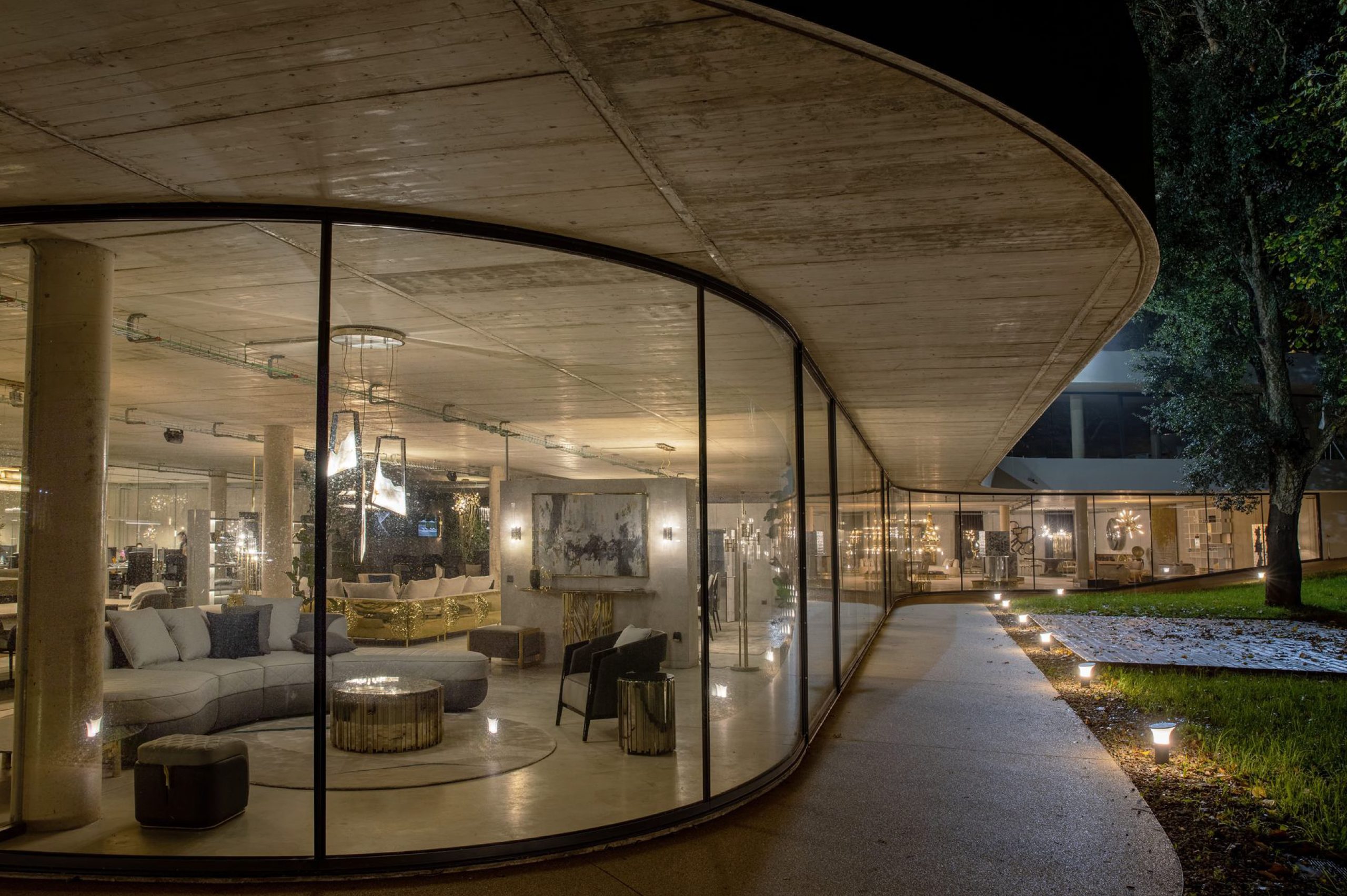In architecture, the pursuit of innovation often leads to the reinterpretation of traditional elements. One such element that has captured the attention of modern architects is the curved window. Unlike traditional straight-edged windows, curved windows introduce a dynamic flow and sense of fluidity into building designs, enhancing both aesthetics and functionality. At OTIIMA, a brand renowned for its minimalist window frames, we’ve welcomed this trend and pushed the boundaries of architectural design.
The Aesthetic Appeal of Curved Windows
Moving away from the rigidity of straight lines, curved windows offer a visually appealing alternative that can transform the look and feel of any room. They create a soft, continuous line that can complement the organic shapes of nature or the sleek curves of contemporary design. This seamless integration into different architectural styles makes them a versatile choice for architects looking to add a unique touch to their projects.
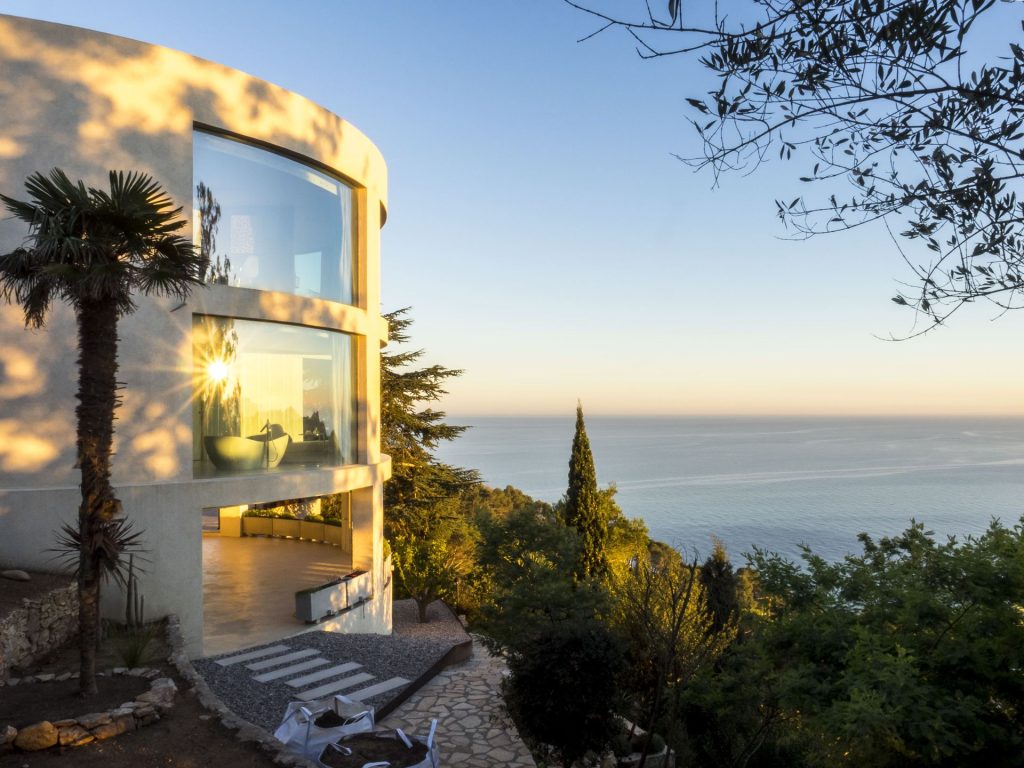
Casa Ses Costes | This Is Arquitectura | © Carles Sánchez
Functional Benefits of Curved Windows
Beyond their visual impact, curved windows also provide several functional advantages:
- Enhanced Views: The curvature allows for panoramic views, making them ideal for locations with stunning landscapes or cityscapes.
- Increased Natural Light: The design can maximize the amount of natural light entering a space, reducing the need for artificial lighting and creating a more welcoming atmosphere.
- Improved Aerodynamics: Curved windows in high-rise buildings can help reduce wind loads and improve the building’s aerodynamic performance.
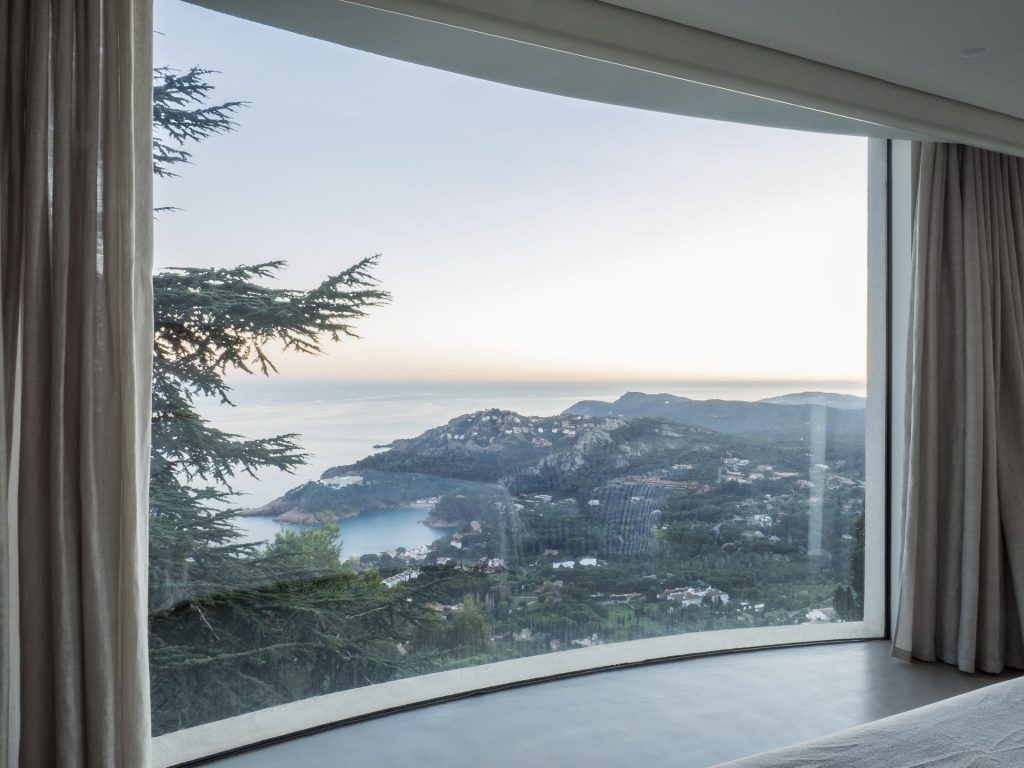
Casa Ses Costes | This Is Arquitectura | © Carles Sánchez
Materials and Technology
The production of curved windows requires advanced materials and cutting-edge technology. At OTIIMA we use high-quality glass and robust framing materials to ensure durability and performance. Our state-of-the-art manufacturing processes allow for precise curvatures that meet exact architectural specifications.
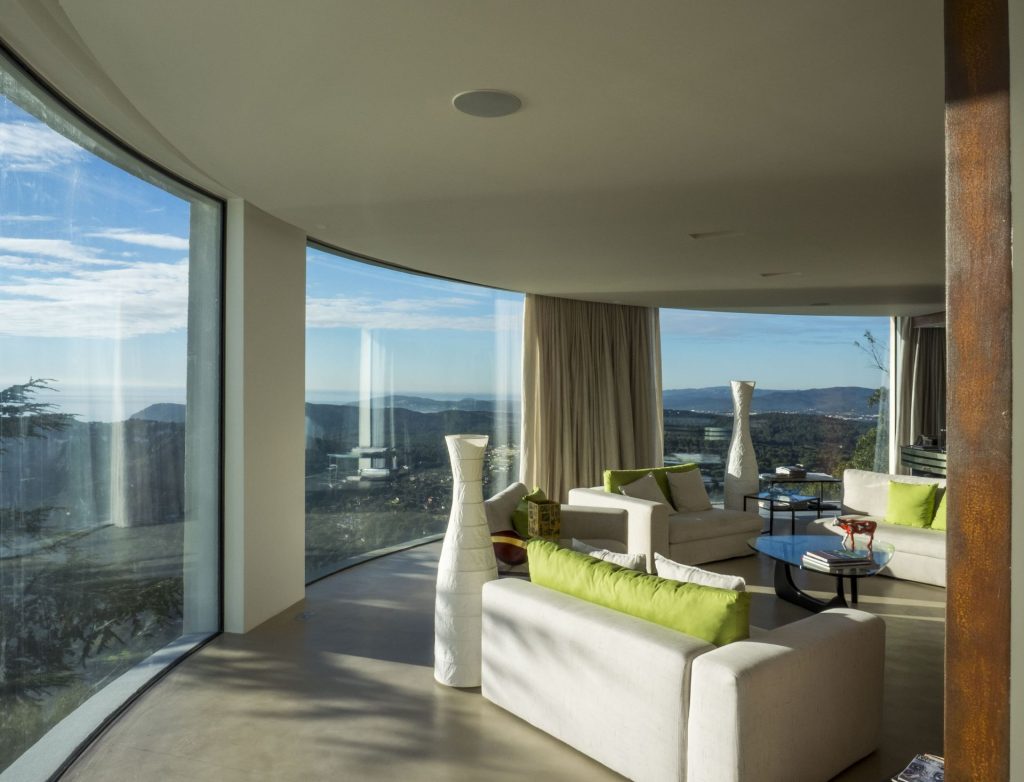
Casa Ses Costes | This Is Arquitectura | © Carles Sánchez
Integration with Minimalist Design
Minimalism in architecture emphasizes simplicity and functionality. Combined with OTIIMA’s minimalist frames, curved windows achieve a harmonious balance of form and function. The thin profiles of our frames ensure that views remain unobstructed, enhancing the sense of openness and connection to the outdoors.
Projects Showcasing OTIIMA's Curved Windows
We take pride in contributing to several projects featuring our curved window designs. Here are a few examples:
Casa Voluta: Nestled in the beautiful landscapes of the Algarve, this house features curved windows that seamlessly blend the interior with the surrounding nature. The minimalist frames complement the natural setting, providing unobstructed views and a tranquil living experience.
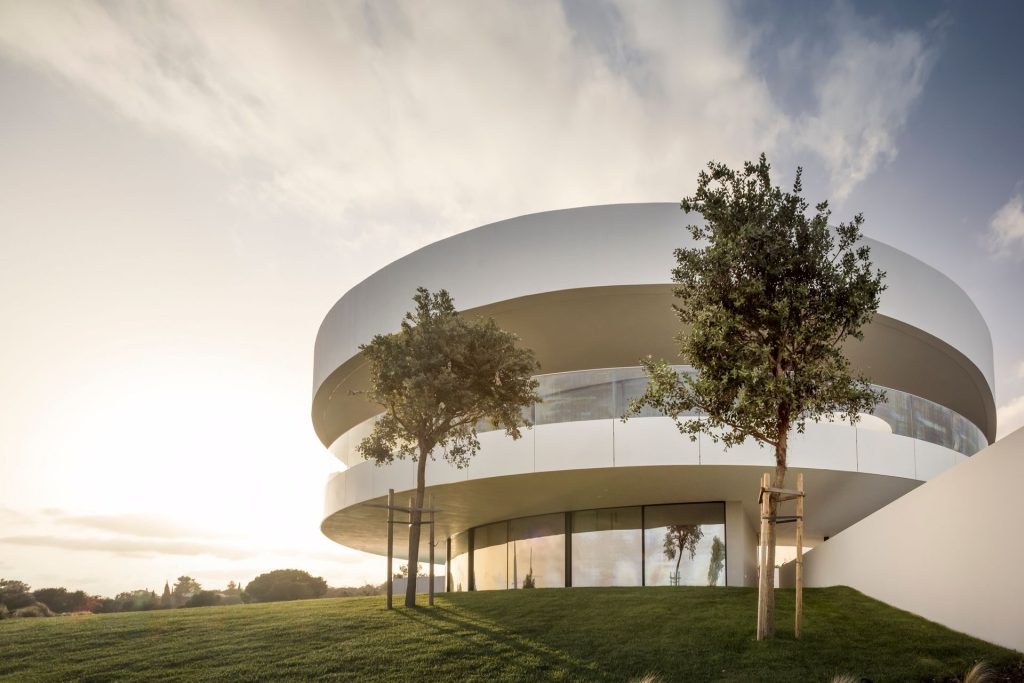
Casa Voluta | Mário Martins Atelier | © Fernando Guerra
We take pride in contributing to several projects featuring our curved window designs. Here are a few examples:
Casa Voluta: Nestled in the beautiful landscapes of the Algarve, this house features curved windows that seamlessly blend the interior with the surrounding nature. The minimalist frames complement the natural setting, providing unobstructed views and a tranquil living experience.
Villa Veyrier Du Lac: In this project, the curved windows provide panoramic views of the lake, seamlessly blending the indoor and outdoor spaces. The minimalist frames complement the villa’s contemporary aesthetic, creating a tranquil and luxurious environment.
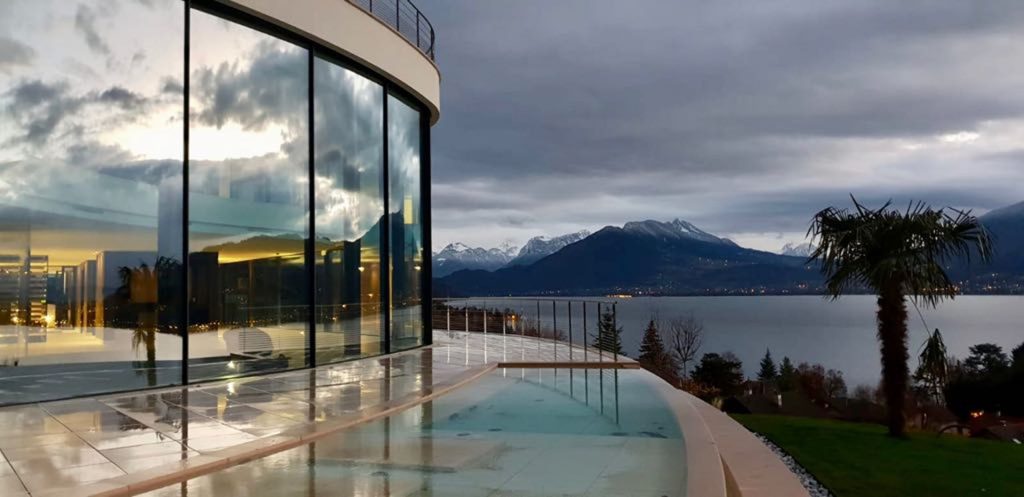
Villa Veyrier Du Lac | Aad Barone & H De Giovannini
Covet Group Showroom: Curved windows create an inviting and inspiring space. The fluid lines of the windows reflect the showroom’s innovative spirit and provide the perfect backdrop for showcasing luxury design pieces.

Covet Town Showroom | © courtesy of Covet Town Showroom
Covet Group Showroom: Curved windows create an inviting and inspiring space. The fluid lines of the windows reflect the showroom’s innovative spirit and provide the perfect backdrop for showcasing luxury design pieces.
Curved windows are more than just a design trend; they represent a shift towards a more fluid, organic approach to architecture. At OTIIMA, we are committed to providing high-quality, minimalist window solutions that enhance the beauty and functionality of your projects. As architects continue to push the boundaries of design, curved windows will undoubtedly play a significant role in shaping future buildings.
Please visit our website for more information about our projects and how we can help bring your architectural vision to life.
